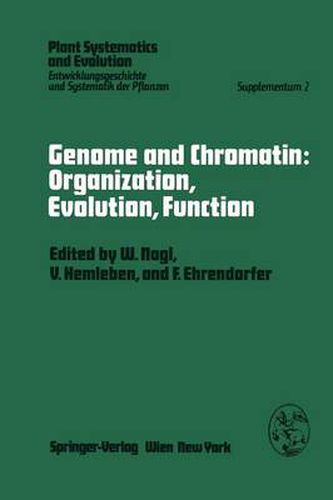Readings Newsletter
Become a Readings Member to make your shopping experience even easier.
Sign in or sign up for free!
You’re not far away from qualifying for FREE standard shipping within Australia
You’ve qualified for FREE standard shipping within Australia
The cart is loading…






This title is printed to order. This book may have been self-published. If so, we cannot guarantee the quality of the content. In the main most books will have gone through the editing process however some may not. We therefore suggest that you be aware of this before ordering this book. If in doubt check either the author or publisher’s details as we are unable to accept any returns unless they are faulty. Please contact us if you have any questions.
At a round table discussion on the eukaryotic chromosome sponsor ed by the Deutsche Forschungsgemeinschaft in Diisseldorf, February 1978, the botanists among the participants felt that plant systems were under-represented. In this unsatisfactory situation, Professor V. HEMLEBEN, Tiibingen, suggested another meeting to discuss actual problems and results concerning botanical chromosome research. Professor W. NAGL was willing to organize a symposium at the University of Kaiserslautern, and Professor F. EHRENDoRFER, Wien, contacted the Rpringer-Verlag, Vienna-New York, to explore the possibility of publishing the results of this symposium in the form of a supplement volume to the journal Plant Systematics and Evol7ttion. The conference took place on 13-15 October 1978 in the Department of Biology of the University of Kaiserslautern and was attended by 40 participants from 11 universities between Hamburg and Vienna. Emphasis of this Chromosome Symposium was given to three aspects, which do not attract major interest at large international congresses: 1. Discussion and Demonstration of technical details which cannot be found in published papers (so-called tricks). 2. Orientation about actual trends and results in our understanding of the organization, evolution, and function of the plant genome at the level of the DNA (gene), the level of chromatin, and the level of the karyotype. 3. Presentation of hypotheses and models which may be stimulating for further research. Moreover, younger students should have the possibility to present their results and to discuss them with more experienced scientists.
$9.00 standard shipping within Australia
FREE standard shipping within Australia for orders over $100.00
Express & International shipping calculated at checkout
This title is printed to order. This book may have been self-published. If so, we cannot guarantee the quality of the content. In the main most books will have gone through the editing process however some may not. We therefore suggest that you be aware of this before ordering this book. If in doubt check either the author or publisher’s details as we are unable to accept any returns unless they are faulty. Please contact us if you have any questions.
At a round table discussion on the eukaryotic chromosome sponsor ed by the Deutsche Forschungsgemeinschaft in Diisseldorf, February 1978, the botanists among the participants felt that plant systems were under-represented. In this unsatisfactory situation, Professor V. HEMLEBEN, Tiibingen, suggested another meeting to discuss actual problems and results concerning botanical chromosome research. Professor W. NAGL was willing to organize a symposium at the University of Kaiserslautern, and Professor F. EHRENDoRFER, Wien, contacted the Rpringer-Verlag, Vienna-New York, to explore the possibility of publishing the results of this symposium in the form of a supplement volume to the journal Plant Systematics and Evol7ttion. The conference took place on 13-15 October 1978 in the Department of Biology of the University of Kaiserslautern and was attended by 40 participants from 11 universities between Hamburg and Vienna. Emphasis of this Chromosome Symposium was given to three aspects, which do not attract major interest at large international congresses: 1. Discussion and Demonstration of technical details which cannot be found in published papers (so-called tricks). 2. Orientation about actual trends and results in our understanding of the organization, evolution, and function of the plant genome at the level of the DNA (gene), the level of chromatin, and the level of the karyotype. 3. Presentation of hypotheses and models which may be stimulating for further research. Moreover, younger students should have the possibility to present their results and to discuss them with more experienced scientists.